Spearheading BIM for infrastructure in Hungary with Duna Aszfalt
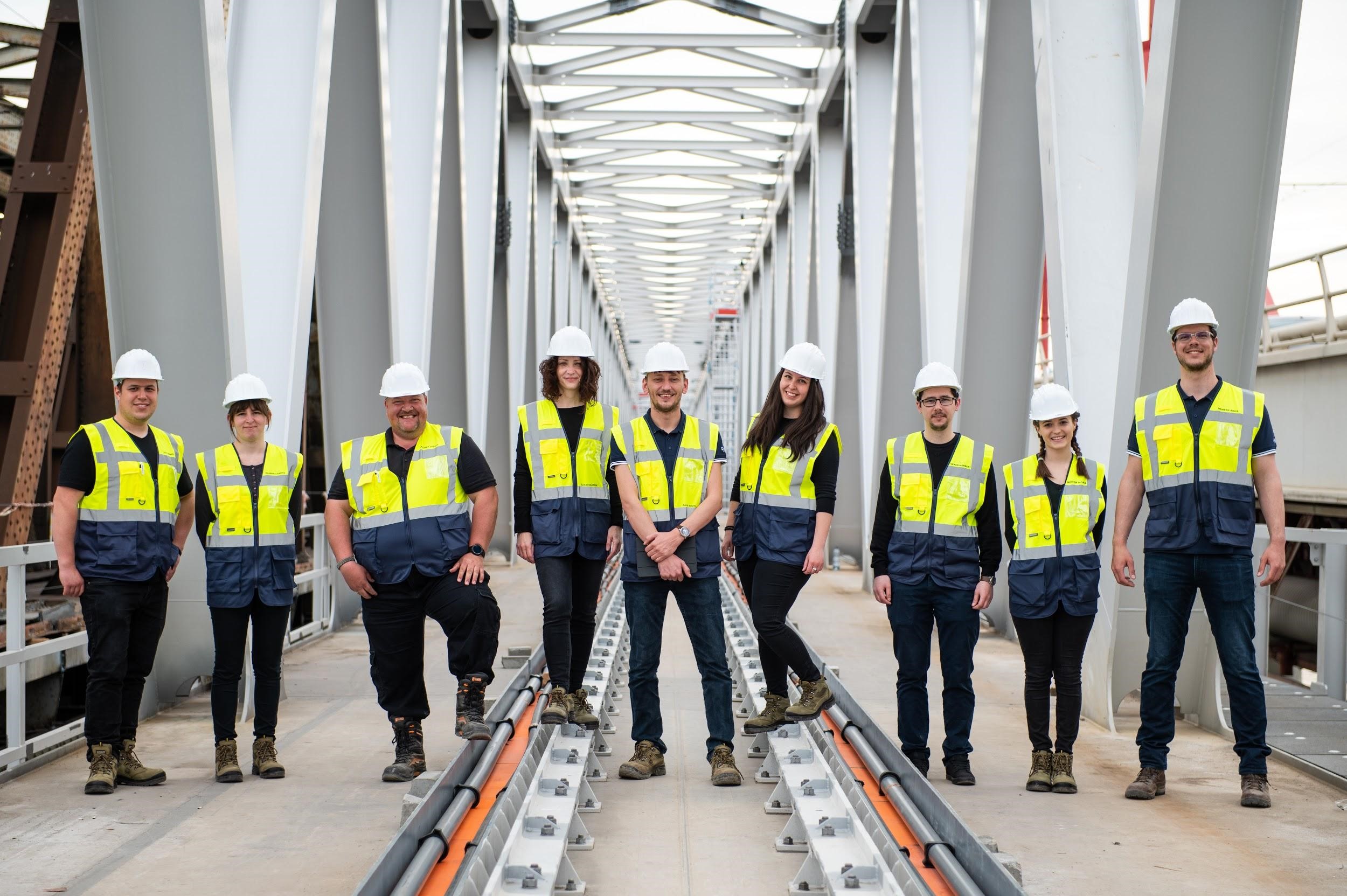
Introducing the BIM concept in their daily work has led to significant gains regarding productivity, quality, and efficiency for Duna Aszfalt Zrt, one of Hungary's biggest local contractors with around 1600 employees. They have chosen two software solutions – Quadri and Novapoint as their main tools to reach a full BIM, level 3 work process.
The company works with all aspects of infrastructure construction such as highway and road construction, environmental projects, and bridges. As the name indicates, Duna Aszfalt is also a leading company regarding asphalt technology, for example, their usage of low energy asphalt (LEA) techniques in their pavement work.
We sat down and chatted with Beatrix Szabo, BIM manager, Karolina Tiszavölgyi, head of the survey team, and Ervin Bakos, head of the design and modeling team at Duna Aszfalt to talk about their experience of working with BIM and using Trimble solutions as a mean to reach their goals.
In this article, the BIM management team at Duna Aszfalt tells us about their work and why they chose Trimble software to reach their goal of being the best BIM team in Hungary.
What is the status of the infrastructure industry in Hungary right now?
"Since the 1990s there has been a lot of focus to upgrade the road network after long times of neglected road maintenance. It is the national road administration that builds and maintains most roads," Ervin tells us.
When it comes to the BIM maturity, the Hungarian Standard Institution has implemented more than 30 European and International BIM standards, and two of them have been translated to Hungarian. The government is supporting the market to work out methods to fulfill these standards. Both Karolina and Beatrix worked on the first BIM handbook for Hungary at their previous workplace.
"But that handbook was mainly for building projects and there a lot of differences between building and infrastructure projects," Beatrix points out.
"Infrastructure projects, such as road projects are always lengthy and require a lot of data. The data come from a lot of sources and are dispersed so we need a different approach when applying BIM to our business," says Ervin. The building industry is also much more diverse when it comes to owners with a lot of private project owners. When it comes to roads and railways it is almost only governmental authorities who are the project owners.
Karolina continues, "because the infrastructure industry is relying on governmental agencies it is also stable and can support the development of the BIM process."
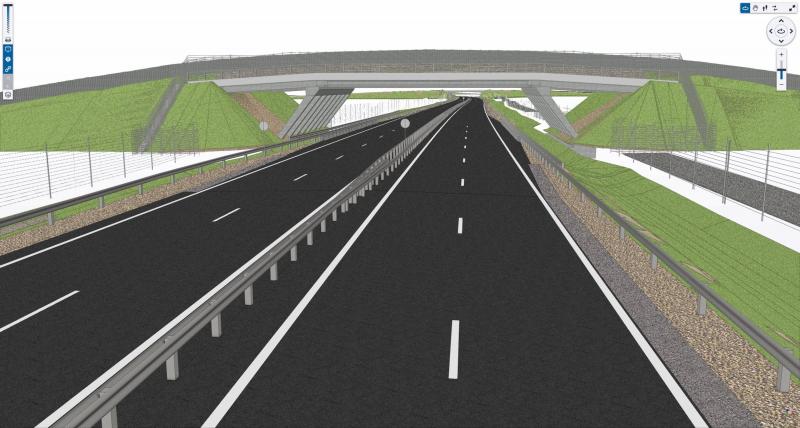
Duna Aszfalt is aiming high regarding VDC and BIM
While Duna Aszfalt is one of the leading contractors in Hungary, they want to be at the forefront of implementing new technology and work methods, and because they have already adopted a lot of technology on the construction sites such as machine control systems and drones, their strategy is to get a more effective workflow from design to construction. The normal situation is that we get a pile of drawings, and then the surveyors on site create a digital model from that drawings by hand.
Ervin tells us, "we want a more controlled and direct data flow from design to construction, and that's what our strategy is all about."
"To be able to change our processes we have established two teams dedicated to this transformation of our business. In 2020 we created a 3D modeling team with 3 designers and a 3D survey team with 4 surveyors. We would like to further expand our department as we have more and more tasks to do," Karolina explains.
Beatrix shares the strategy and its human side, "most people at the company are open to change and see the benefits in changing our work methods. But of course, like in all organizations changes are sometimes hard. We don’t want to scare people off from BIM by enforcing anything on them, instead, we have a real “flagship” project where we show that this really works, and from that, we spread the BIM methodology through the company."
Why Trimble Quadri?
In 2019, when Duna was starting off our BIM strategy, they also started to look at different software solutions. They tried out solutions from other vendors, not really fulfilling their needs of a common data environment.
"In my previous workplace, I was in brief contact with Quadri and Novapoint and we decided to contact Trimble about it. So in 2019, we got some evaluation licenses from Trimble and also very good support from them when we were starting to test. We tried out several types of software before. We found out that Quadri is a real BIM software that perfectly fits our BIM strategy," says Ervin.
Quadri is a true BIM platform because you have full support for object-based models so we don't need to bother about files anymore. It is all in the model - it is updated at all times and we have instant access to a fully visualized 3D model representing the real project data. When it comes to the design software, Novapoint is much better than other design solutions that we have experience of. Novapoint is so much better at handling large models. It doesn’t have any problems even handling road projects about 40 km as opposed to other design software in which you cannot use road models larger than 2-3 km before it is getting too slow to work.
Another thing that is really good about Quadri is the openness to other solutions. In our Road 83 project, we use data from both Revit, Novapoint, and Civil 3D and the Quadri connectors make it possible to read the design data directly from the different software without any file exports. This is unique to Quadri if you compare it to other systems on the market, where you must use systems from their own portfolio to work in a real collaborative way. I strongly believe Trimble is right when opening up the Quadri platform to other systems like this.
How is it to work with Quadri and Novapoint?
"We are almost surprised how fast our implementation has been. It is really easy to learn to use both Quadri and Novapoint," says Karolina before she continues to talk about the implementation. "We also want to thank Trimble for their excellent support during this period. They are always happy to help us no matter what."
"We mainly use Novapoint Road design, but also the Water & Sewer module. To get a better model we also added road markings and some road signs. Today there is no localized version for Novapoint Road Markings and Novapoint Road Sign in Hungary but we used another country localization for that," Ervin tells us.
Beatrix continues, "Quadri is a total game-changer for us because we have control of what is done, when and by who, Everyone in the project has instant access to the model data and can extract volumes, machine control data, or check what has been done."
Results and productivity gains. Specific improvements since using Quadri and Novapoint.
"Well the most important thing for us as a contractor is that we are closing the gap between the construction site and the office by using a common data environment like Quadri," Karolina and Ervin weigh in. "We have also improved the analysis of technical challenges in the field, so we address them early because they cause any problems at the construction phase. And that is valuable because we avoid stops in the production."
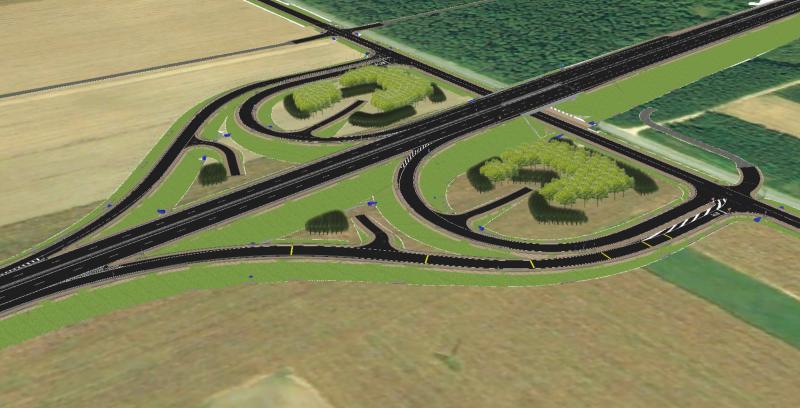
Because we have a 3D picture from 83 site designs of everything in the project, we can produce the machine control data in a very efficient way. I assume we spare about 75% of the time compared to earlier when it comes to producing machine control data.
Beatrix adds, "the fact that we have a common model for everything also saves us a lot of time. All data is obtained from the same source, no matter if it is volumes, planning data, or machine control data. And that is a real boost for our effectiveness."
The next step
After almost one and a half years working with Quadri and Novapoint, it is time for us to take the next step. , That is to develop also a structured way of performing the modeling, and design work. We will set up a standard for how to model certain situations, so everyone does it the same way.
"We all think Trimble has a fantastic portfolio of products so now we are also starting to use TILOS for planning, and we would love to also use Trimble SiteVision (a Trimble augmented reality system) soon," Karolina concludes.

Our Interviewees
Karolina Tiszavölgyi graduated from Budapest University of Technology, Faculty of Architecture, Department of Industrial and Agricultural Building Design in 2016. After that, she has been working as an architect-designer at DVM Group. Karolina later joined a Hungarian professional background institution of architecture, construction, real estate registration, and GIS in the Prime Minister's Office as a project support engineer and a BIM specialist. She participated in writing the first BIM manual in Hungary during that time. Currently, Karolina is the head of the 3D survey department of Duna Aszfalt Zrt.
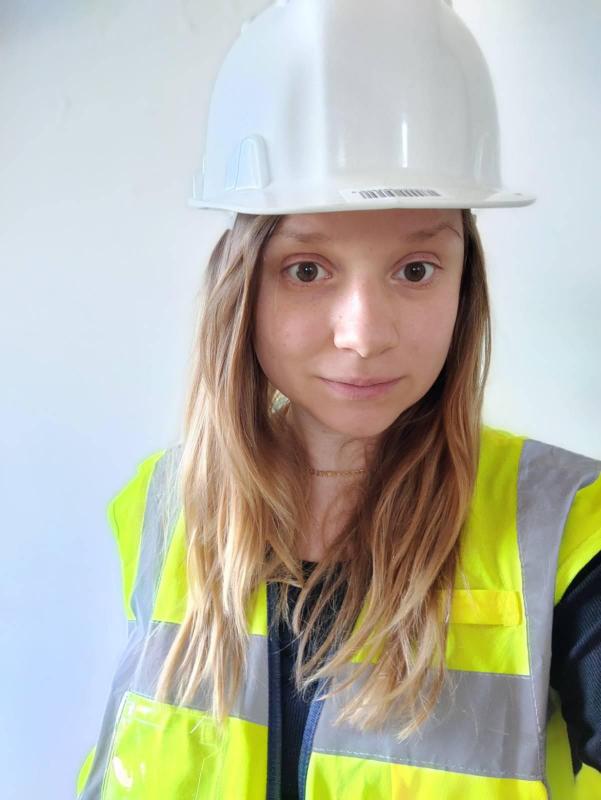
Beatrix Szabo has been leading the BIM department at Duna Aszfalt Zrt since 2020. She graduated as an architect from the Technical University of Budapest and is also trained in GIS at various universities. Before starting her work at Duna Aszfalt Zrt Beatrix has been working at a surveying company for four years and also with the writing of the first Hungarian BIM handbook at the prime minister's office. Beatrix has also been involved as a BIM expert in various projects about BIM-based web applications.
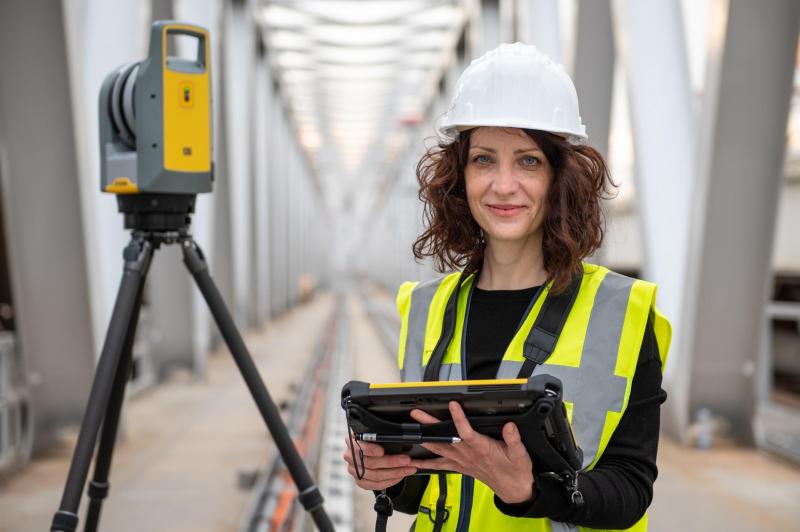
Ervin Bakos has eight years experience of in BIM and has been working for Duna Aszfalt as BIM expert since November 2019. Before that Ervin worked for Trimble VDC Division for six years. During that period he had the opportunity to work with BIM and see how the AEC industry applies BIM processes in many countries. Ervin Bakos is a graduate from the University of Pécs - Faculty of Engineering and Information Technology as an Architectural and Structural Designer.
